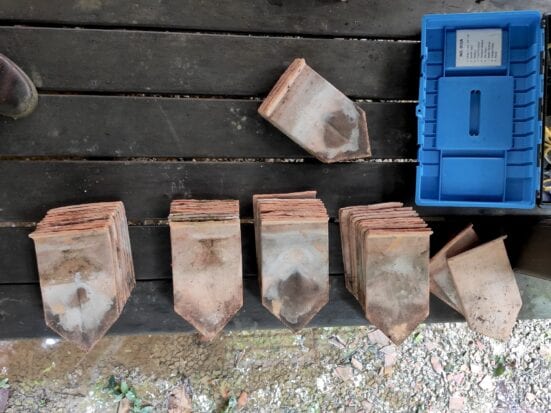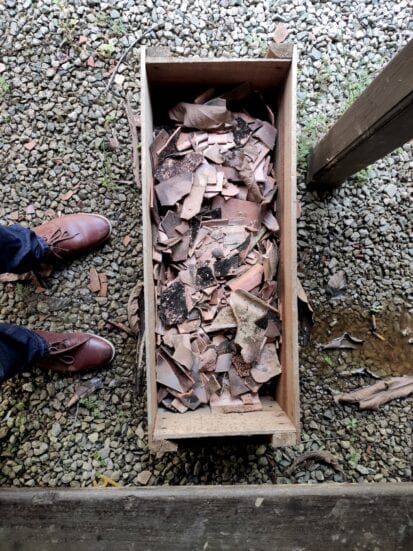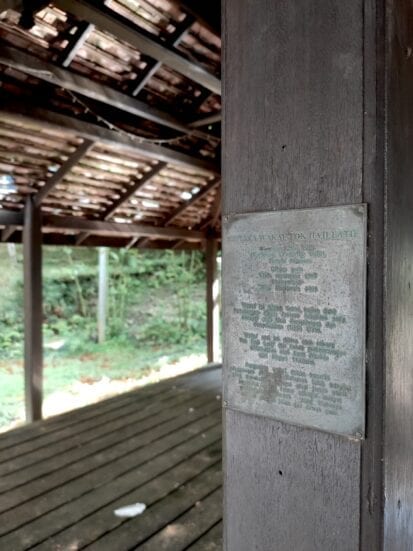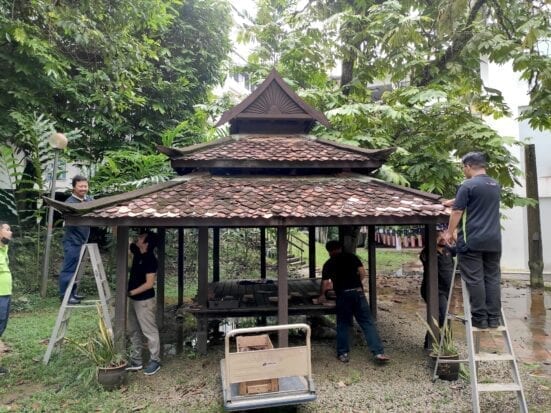The Faculty of Built Environment and Surveying (FABU), Universiti Teknologi Malaysia (UTM), had conducted event and activity at FABU square in September 2020 to replace some of the Singgora roof tiles on the existing traditional wakaf that were already damaged. This event was organized together by FABU, the Centre for the Study of Built Environment in the Malay World (KALAM), and the School of Architecture and was participated by FABU’s academic and non-academic staff.
The activity to replace the Singgora roof tiles was conducted collectively as a gotong-royong (mutual help), using manual labor and accompanied by meals particularly pulut kuning (yellow sticky rice). When dealing with traditional built structures or wakaf-building, serving the pulut kuning is part of the tradition within the School of Architecture. Replacing Singgora roof tiles was a common scene in the past where traditional Malay structures such as wakaf were constantly amended and improved. Hence, this activity is akin to the process of building preservation which has been practiced in the past.
The Singgora roof tiles were brought from Kelantan, where it remains as the only place for such clay tiles are being produced and sold within Malaysia. Singgora roof tiles are made from clay, manually by foot, and normally used on the roof of traditional timber houses without using any nails or fasteners. The tiles on the wakaf are laid out in an overlapping manner to prevent rainwater seepage on the roof.
This 33-year-old traditional timber wakaf, is a replica of ‘Wakaf Tok Haji Latif’ in Kampong Kedai Parit (Kampong Cendering Batu), Tumpat, Kelantan built on 17th September 1987. It is currently used as a place to unwind and experience the tranquility of FABU Square. Generally, wakaf is a small structure placed in public areas and utilized by communities as a place to rest as well as an asylum from the hot sun and rain which is basically for charitable purposes.
At the end of the event, only about less than 100 tiles were replaced as it was limited in number and some were broken in the process. Part of the preservation activity had been undertaken, however, the next gotong-royong activity needs to be planned soon to complete the remaining roof areas. As of now, FABU had successfully purchased and received hundreds of additional tiles from Kelantan and ready for replacement.
For more information on this traditional wakaf at FABU Square, a plaque containing a brief description of the wakaf history is located at one of the timber columns. Adjacent to the wakaf is a tall timber column or ‘Tiang Seri’ as an artifact of architectural heritage that can be appreciated and viewed by the public.








